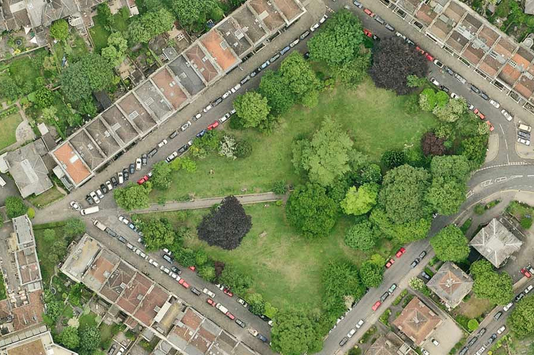Victoria Square
Victoria Square stands on what was originally a field called Ferney’s Close. There was a diagonal path across the field, which remains the path today.
The four sides of the square are different from each other and. date from different decades. The first was Lansdown Place built around 1835 on the north-east side. At No. 13 is a plaque to Dr William Budd, who discovered that cholera was caused by polluted water.
Next to be constructed was Royal Promenade that includes the royal coat of arms above numbers 7 and 8. Numbers 3, 4 and 5 were damaged by bombing in WWII but flawlessly rebuilt.
The south-west side was built next. The famous cricketer W.G. Grace lived at No. 15, which is marked with a Blue Plaque and the residence of a pioneering architect, Eveline Dew Blacker, is memorialised at No. 20. By the time the fourth side of the square was completed, terraces were out of fashion with the well-to-do, and villas were built instead.
When the Square was begun it had a pleasure garden with statuary, some of which remains lying on the grass. In Victorian times, the gardens were railed off and the public were restricted to the diagonal path. This path – not the one through St Andrew’s Churchyard – is the original Birdcage Walk.
There was a tunnel under the path to allow the residents’ children to play in both gardens without having to encounter the public on the footpath. The tunnel has been filled in but its top can just be seen about 20 yards short of the south-east end of the path, on the south side of the low wall. The railings were removed as part of the war effort in WWII and not replaced.
Some of the trees are from the original 1840s planting.
